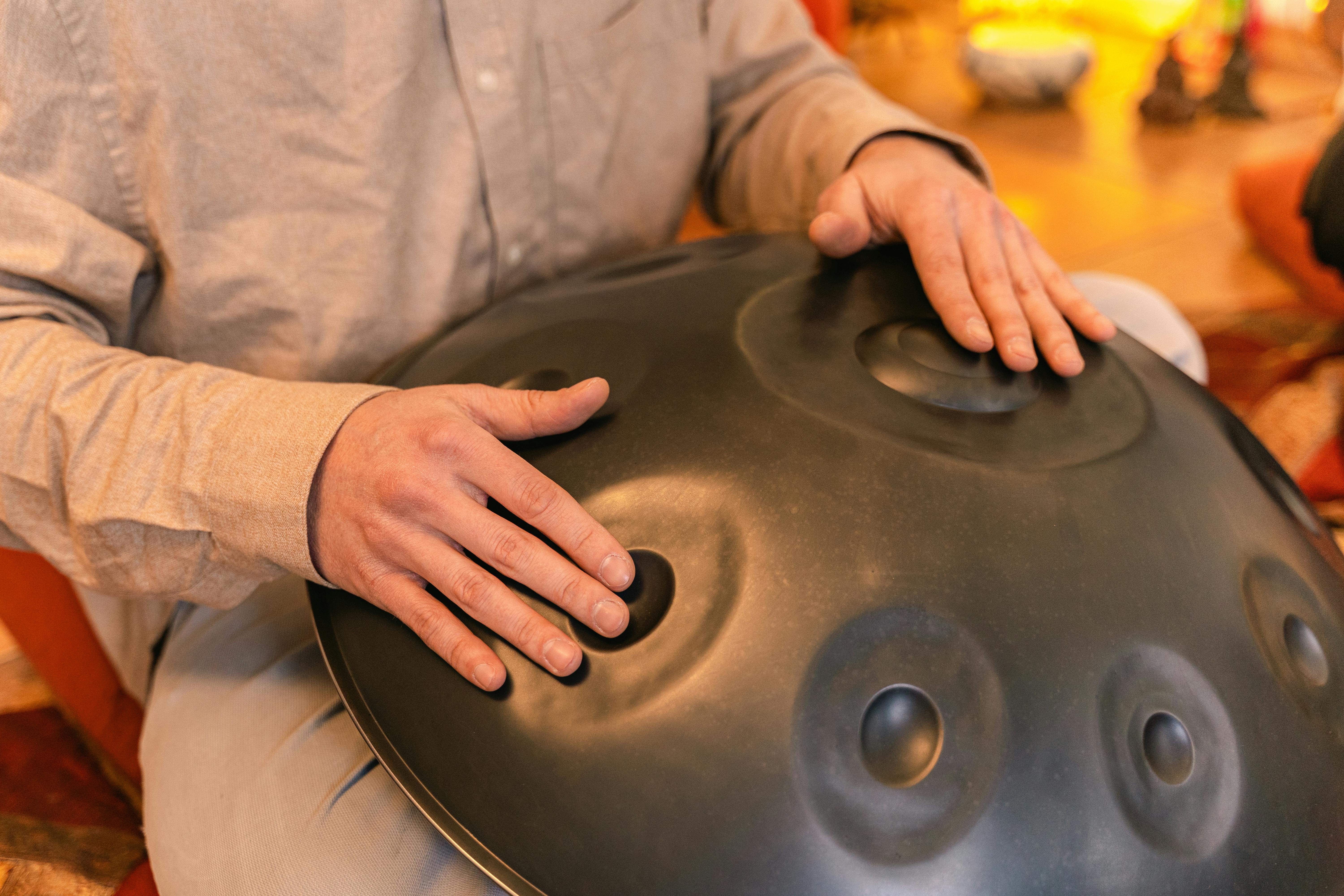Learn how this globally recognized, funk juggernaut found a foothold in a genre not traditionally known for steelpan.
Famed Indian author, Anita Desai once said, “Wherever you go becomes part of you somehow.” For German musician, Björn Wagner, this statement couldn’t be more true.
Wagner has been a musician since childhood, having grown up playing an old battered acoustic guitar, which he taught himself to play by listening to his parent’s record collection. “It was a great collection of rock and rhythm & blues,” he said. “Even though they aren’t musicians, music played an important cultural role in our home and that sparked on me as a kid.”
When Wagner was studying musicology at the University of Hamburg, he enjoyed backpacking in different countries. One of those countries was Trinidad & Tobago. During his visit, he discovered steelpan and steelband culture, which would shape his future in a massive way.
“Fascinated as I was, I enrolled for a whole semester at the University of the West Indies (U.W.I.) to learn more about it. Given its percussive nature and melodic abilities, I was surprised that it was not used more often in a funk band,” Wagner said. “There are quite a few notable exceptions on records from the 1970s, but I wished I could hear the combination more often and with a modern punch. As no one else in the world seemed to volunteer to do a steel funk record, I just had to do it myself.”
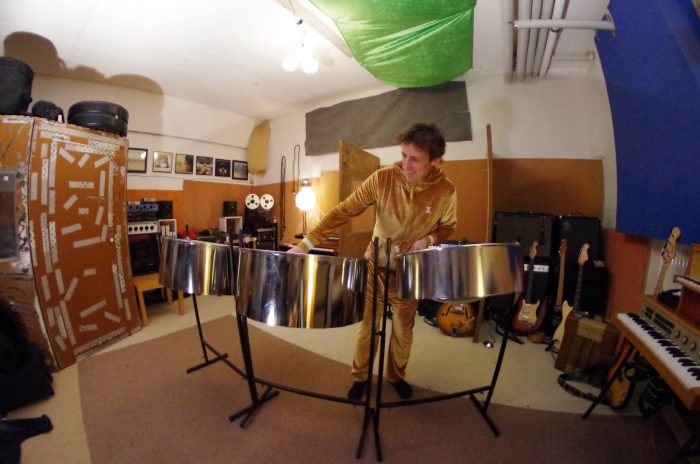
While Wagner was unsure at first of the viability of trying to make a living as a professional musician, he felt that attaining a Master’s degree in musicology would be a safe bet. “I still was not convinced at the time that I wanted to earn a living by playing music, so I thought these studies – with a perspective of working at the radio or a publisher – were a good way to combine my talents and interests with an actual possibility to make a living with music.”
His instincts would prove right, as he would end up founding his own group, Bacao Rhythm & Steel Band (BRSB) and achieving his goal of making a career of playing music.
Funky Beginnings
With a concept in his mind and a Master’s degree in his pocket, Wagner set off to take his love of classic 70s funk and combine it with the steelpan. He would be aided by the help of Trinidadian steelpan builder, Louis C. Smith, who Wagner met at the U.W.I. Smith offered to build Wagner an instrument, which he crafted from an old oil barrel, giving it a more rustic, classic sound, similar to how pans sounded in the early days.

“It sounds less bell-like and has a shorter decay. It is thinner and the tone fields are flatter which gives it a unique tone,” Wagner said. “Over the years, I have had another low C single tenor and a double second made by Gills Pans (out of Curepe, Trinidad next to where I lived), but I still cherish my first pan and use it on every recording along the others.”
The group’s first two recordings, released in 2007, were covers of The Meters “Look A-Py-Py” & “Ease Back” on a 45 rpm vinyl record.
“In the beginning, I was content to do versions of other 1970s classics. When I heard 50 Cent’s ‘P.I.M.P.’ with its steelpan melody played on a keyboard, I knew it would be fun to flip it and play it on a real instrument,” Wagner said. His cover of “P.I.M.P.” would go on to be streamed over five million times on Spotify and played over two million times on YouTube (before it was taken down).
Don’t focus on technique and skills; I don’t have much of that. What counts are the ideas you have and the stories you want to tell.
Björn Wagner
“We first played it live with a DJ cutting in the 50 Cent acapella – to the great joy of the audience,” Wagner said. “For the record, I did not want to make a mashup and illegally use the acapella, so I brought in our trumpet player to give the song another voice. I also liked the idea to leave it open to people’s ears whether they take it for the original sample, given that we played it entirely on real instruments and recorded on tape like in the 1970s.”

To maintain the 70s funk feel he wanted, Wagner arranged it from the perspective that it could have been a precursor, not a cover. “The melody 50 Cent uses has been around for a while; there are recordings from the 1930s or 1940s that have very similar lines,” Wagner explained. “The press release note of our single deliberately omitted any info. I wanted mystery and interest rather than personal credit.”
The recording of P.I.M.P. quickly created a buzz in the DJ and vinyl collector scenes, largely due to its unique recording style, use of a real steelpan, mysterious roots and the fact that it was only available on vinyl, which sold out fast, creating even more of a buzz amongst its enamored fanbase.
A Regal Relationship
Bacao Rhythm & Steel released its first full-length album, “55” in 2016, to critical and commercial acclaim. The album was released on Big Crown records, a Brooklyn-based funk label that recognized the band’s appeal quickly from its sold out pressings and signed them to a deal, helping them record 55.
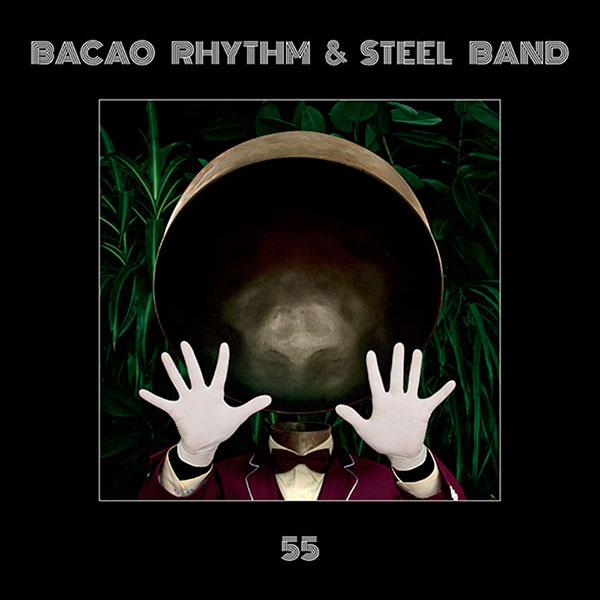
“I was only doing vinyl 45s and had just started recording more material when Big Crown signed us. They have a great taste in music and helped us get heard by so much more people.”
The album featured a mix of funk staples, underground hip-hop classics and catchy originals that all capture the essence of the band’s unique caribbean-funk sound.
The signature sound was inspired by classic funk recordings of the 1970s, with Wagner modeling his recording techniques off of them by using 8-track tape to record the rhythm section until all tape tracks were full, while the steelpans were often recorded into Protools after the 8-track tape had been transferred.
Wagner used a mix of tenor and double second steelpans on the recordings, overdubbing when he felt it was appropriate to double up parts.
To help create a mystique for the group, Danny from Big Crown records suggested the idea of a person on the cover wearing a tuxedo with a steelpan for a head. The look worked, helping to shroud the group in mystery, giving it a unique appeal.
“A bit of mystery certainly leaves more room for imagination, which is a good thing with music,” Wagner said. “I am very happy we did something more abstract and graphical rather than having a group shot with the musicians behind their instruments.”
On the Record
The group released its second full-length album, The Serpent’s Mouth, in 2018. The record featured a mix of funk and reggae covers, including the 80s Jan Hammer classic, “Crockett’s Theme”, along with several original songs. This time the album cover featured three panhead characters in tuxedos, continuing with the band’s mystique.
This time around, the album would garner the attention of NPR’s All Things Considered, the station’s flagship news program and continue its success by achieving over 2 million streams for Crockett’s Theme (from the hit show Miami Vice) and over 1.3 million for “Xplosive” (Dr. Dre via Isaac Hayes).
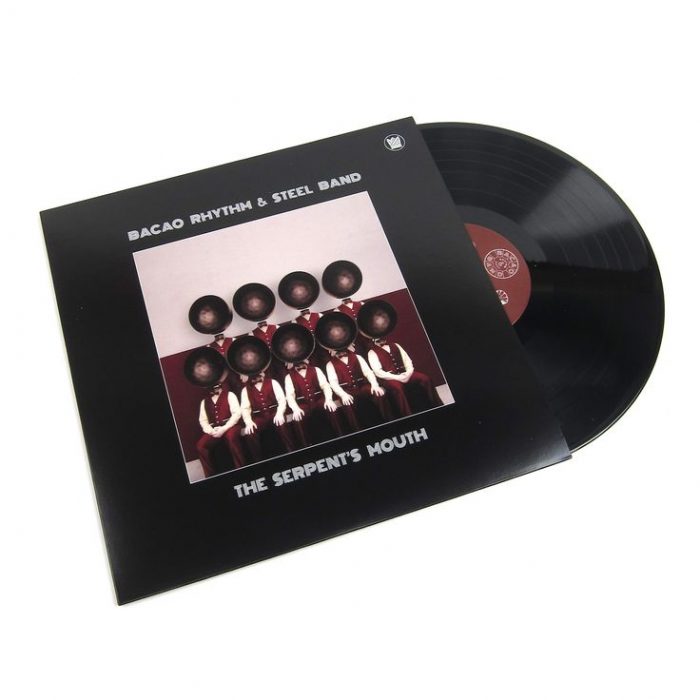
Wagner employed some help with arranging and recording on this album, compared to the previous which he recorded and produced solo.
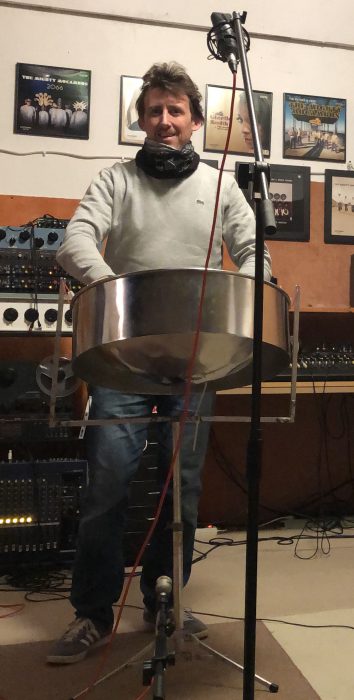
“For the last album I wrote many of the tunes together with Bernhard Hummer, who plays baritone saxophone and can handle a double second, which is a good combination if you want to do a call and response between horns and pans,” Wagner said.
The recording techniques he developed came from his love and respect for steelpan, funk, hip-hop, soul and reggae.
“I record in an old school way. The rhythm section goes straight to an analog tape machine with a maximum of three mics on the drum kit. Levels are usually hot to get the right amount of crunch and compression on the spot. For the pans I have tried different mic settings over the years. One dynamic mic rather close over or under each pan is good for live or if your room does not sound that great,” Wagner explained. “My current favorite [technique] is to mic them with an Electro Voice RE15 from underneath and a Neumann U89 from above, both three feet away from the front and the same distance to the pan surface.”
The Serpent’s Eyes
“There is no ultimate goal so far. We have already done a bunch of [sync licensing deals] from ads for Apple to Netflix series’. I am a big fan of score and film music and I enjoy seeing my music in combination with pictures,” he said. “We want to continue to explore the possibilities of the steelpan. It feels like we just started. The most important thing for me is to continue experimenting and not being stuck with a formula. I’d still love to hear steel drums combined with techno for example.”
With two hit records under his belt, Wagner has no plans to slow down, with a third record already in the works. As for future goals with the group, Wagner has no solid plans, but he knows what he doesn’t want.
Choosing to record pop and funk music instead of traditional steelpan music from Trinidad was a conscious choice, according to Wagner. “When it comes to traditional steel pan music, that’s often covers of classical pieces or calypsos. The bands and orchestras in Trinidad are so good, they’re not something I could or would want to compete with. That has been done already,” he said. “I am also looking for another angle and try not to replicate something. I like the repetitiveness of funk, hip-hop and disco. I prefer to play songs in minor keys and I am happy that the steelpan has found its place in there.”
“I have a deep respect for the art and mastery of the steelpan. My philosophy is that I do not want to compete with bona fide skilled players, that’s a league of its own. I approach the instrument in a non-formal, DIY way that you would not learn in school. Most of the steelpan recordings I know are either full orchestras or you would find a lone soloist in a jazz or pop song to add some exotic flavor. I love to use pans in the way you’d use a brass section, or even have them play against or with a brass section. I also like to use them like a guitar or a vibraphone, in a supporting role for another lead instrument,” Wagner continued. “A recent favorite is to arrange piano parts for steel drums, like we did for our version of Mary J. Blige’s “I Love You”, which is based on Isaac Hayes’ “Ike’s Mood”. It took five or six double seconds to play it with the same voicings as on the piano.”
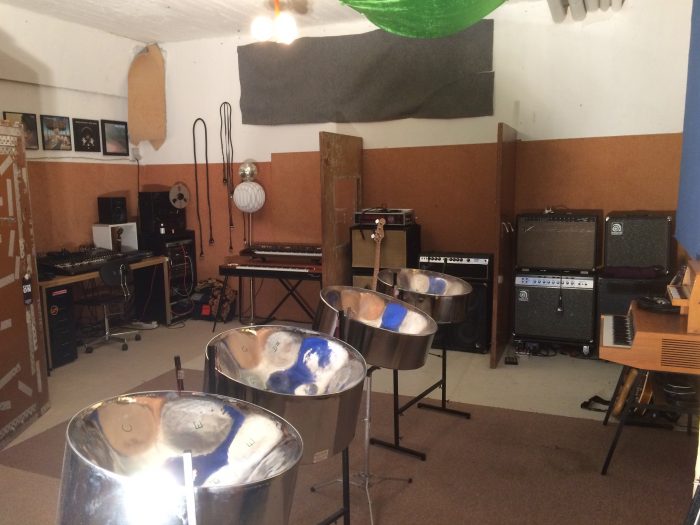
To the uninitiated, steelpan is still considered a novelty instrument, maintaining its deep ties to Caribbean culture while ignoring its rich and versatile history of bridging musical genres. Wagner has a different viewpoint.
“I’ve never looked at it like this. It would make me very happy though if I could help show that the steelpan is more than just a novelty or an island cliché used in rum advertisements,” Wagner mused. “I hope that Trinidad & Tobago gets the proper credit for the innovation and developing the steelband culture, and at the same time I would love the pan to be perceived as an instrument that is not restricted to evoke ‘island vibes’ and becoming as universally accepted to one’s ears as the vibraphone.”
For those seeking to make their own mark with the steelpan, Wagner said, “Don’t focus on technique and skills; I don’t have much of that. What counts are the ideas you have and the stories you want to tell.”
Learn more about Bacao Rhythm & Steelband here.


